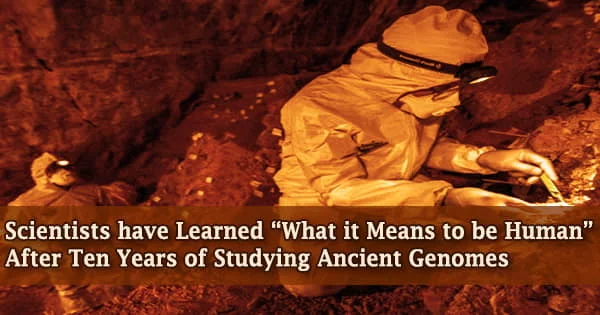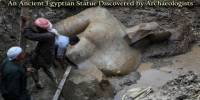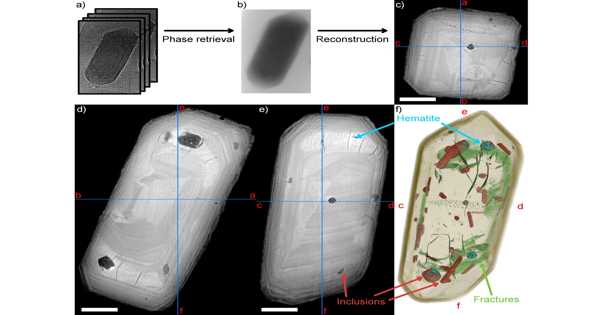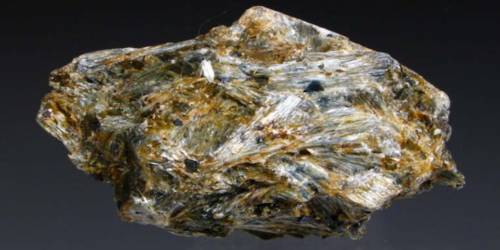Just over a decade ago, a clump of 4,000-year-old hair wrapped around a whalebone comb led to the first-ever reconstruction of an ancient human genome.
The hair was obtained in the 1980s and housed at a museum in Denmark after being frozen in arctic permafrost in Greenland. It wasn’t until 2010 that evolutionary scientist Professor Eske Willerslev was able to recreate the genetic history of hair using cutting-edge shotgun DNA sequencing.
He discovered it belonged to a guy from the Saqqaq civilization, Greenland’s first known settlers. It was the first time a whole ancient human genome has been discovered.
Now a review of the first decade of ancient genomics of the Americas published in Nature today (June 16, 2021) written by Professor Willerslev a Fellow of St John’s College, University of Cambridge, and director of The Lundbeck Foundation GeoGenetics Centre, University of Copenhagen, with one of his longstanding collaborators Professor David Meltzer, an archaeologist based at Southern Methodist University, Texas, shows how the world’s first analysis of an ancient genome sparked an incredible ‘decade of discovery.
Professor Willerslev said: “The last ten years has been full of surprises in the understanding of the peopling of the Americas I often feel like a child at Christmas waiting to see what exciting DNA present I am about to unwrap! What has really blown my mind is how resilient and capable the early humans we have sequenced DNA from were they occupied extremely different environments and often populated them in a short space of time.”
“We were taught in school that people would stay put until the population grew to a level where the resources were exhausted. But we found people were spreading around the world just to explore, to discover, to have adventures.”
“The last 10 years have shown us a lot about our history and what it means to be human. We won’t ever see that depth of human experience on this planet again people entered new areas with absolutely no idea of what was in front of them. It tells us a lot about human adaptability and how humans behave.”
Scientists have depended on archaeological evidence to recreate the past for decades, yet their hypotheses have not always been correct. It was previously assumed that non-Native Americans lived in the Americas, but ancient DNA study has revealed that all of the ancient remains discovered are more closely linked to modern Native Americans than to any other population on the planet.
The last ten years has been full of surprises in the understanding of the peopling of the Americas I often feel like a child at Christmas waiting to see what exciting DNA present I am about to unwrap! What has really blown my mind is how resilient and capable the early humans we have sequenced DNA from were they occupied extremely different environments and often populated them in a short space of time.
Professor Eske Willerslev
Professor Meltzer, who worked on the review with Professor Willerslev while the former was at St John’s College as a Beaufort Visiting Scholar added: “Genomic evidence has shown connections that we didn’t know existed between different cultures and populations and the absence of connections that we thought did exist. Human population history has been far more complex than previously thought.”
“A lot of what has been discovered about the peopling of the Americas could not have been predicted. We have seen how rapidly people were moving around the world when they have a continent to themselves, there was nothing to hold them back. There was a selective advantage to seeing what was over the next hill.”
Scientists sequenced the DNA of a four-year-old kid who died 24,000 years ago in south-central Siberia in 2013. Russian researchers uncovered the grave of an Upper Palaeolithic Siberian kid in the settlement of Mal’ta, along the Belaya river, in the 1920s.
The Mal’ta genome sequence was crucial because it revealed the presence of a previously unknown group that contributed to Siberian and Native American heritage.
Professor Willerslev and his colleagues released the first ancient Native American genome two years later, sequencing the bones of a baby boy ceremonially buried over 12,000 years ago in Anzick, Montana.
Kennewick Man, one of the oldest and most complete skeletons ever discovered in the Americas, and one of the most contentious, was solved in 2015 thanks to their ancient genome study.
The 9,000-year-old bones had been enveloped by a cloud of controversy when legal control over the skeleton became the center of a decade of battles between five Native American tribes and the US Army Corps of Engineers, who claimed possession of the man they dubbed Ancient One.
Professor Willerslev, who has correctly learned to be sensitive to cultural sensitivities when looking for ancient DNA, has spent much of the last decade talking to tribal community members to explain his study and solicit their support.
This allowed him to reach an agreement with members of the Colville Tribe, who live in Washington State, where the bones were discovered, to submit some of their DNA in order for Professor Willerslev and his colleagues to determine if they had a genetic relationship with Kennewick Man.
Jackie Cook, a descendant of the Colville Tribe and the repatriation specialist for the Confederated Tribes of the Colville Reservation, said: “We had spent nearly 20 years trying to have the Ancient One repatriated to us. There has been a long history of distrust between scientists and our Native American tribes but when Eske presented to us about his DNA work on the Anzick child, the hair on my arms stood up.”
“We knew we shouldn’t have to agree to DNA testing, and there were concerns that we would have to do it every time to prove cultural affiliation, but our Council members discussed it with the elders and it was agreed that any tribal member who wanted to provide DNA for the study could.”
Like the Anzick infant, the Kennewick Man’s genome proved that he was a direct ancestor of surviving Native Americans. The Ancient One was properly reburied and restored to the tribes.
Cook added: “We took a risk but it worked out. It was remarkable to work with Eske and we felt honored, relieved, and humbled to be able to resolve such an important case. We had oral stories that have passed down through the generations for thousands of years that we call coyote stories teaching stories. These stories were from our ancestors about living alongside woolly mammoths and witnessing a series of floods and volcanoes erupting. As a tribe, we have always embraced science but not all history is discovered through science.”
Professor Willerslev’s research has helped to pinpoint the beginnings of Spirit Cave, the world’s oldest natural mummy. The ancient human skeleton was discovered in 1940, but it wasn’t until 2018 that a remarkable discovery was made that revealed the mysteries of the Americas’ Ice Age people.
Spirit Cave, the Lovelock skeletons, the Lagoa Santa remains, an Inca mummy, and the oldest remains in Chilean Patagonia were all part of a research that genetically analyzed the DNA of a succession of renowned and contentious ancient remains across North and South America.
Scientists analyzed 15 ancient genomes from Alaska to Patagonia and were able to track the earliest humans’ migrations throughout the Americas at an ‘astonishing’ pace during the Ice Age, as well as how they interacted with one another during the millennia that followed.
The researchers not only determined that the bones in Spirit Cave belonged to a Native American, but they also disproved a long-held belief that a tribe known as Paleoamericans lived in North America before Native Americans. The Fallon Paiute-Shoshone Tribe, a tribe of Native Americans headquartered in Nevada, was given Spirit Cave for burial.
Professor Willerslev added: “Over the past decade human history has been fundamentally changed thanks to ancient genomic analysis and the incredible findings have only just begun.”
















